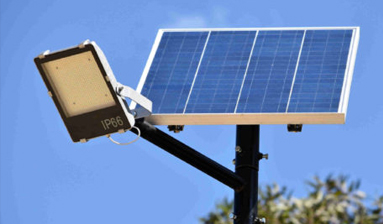

With the vigorous promotion of clean energy by the coun […]
With the vigorous promotion of clean energy by the country and the rapid development of solar energy technology, solar lighting fixtures are widely entering urban public lighting and residents' outdoor lighting. Especially the strong combination of solar energy and LED lamps, high brightness, long life LED sun lights have excellent performance. Many friends want to install such solar outdoor lights in their own courtyard, but they don't understand the principle and performance, and worry about its use effect and life. Therefore, this article will popularize the working principle, structure, technical parameters and requirements of solar lighting fixtures.
First, the working principle of solar LED lights
The basic principle of solar LED lights is to use solar photovoltaic panels to convert sunlight into electrical energy, which is transferred to the storage battery through the intelligent solar controller. When the natural light level drops to need lighting, the storage battery is passed through the intelligent controller (comparison circuit) The electrical energy output to the LED causes it to emit visible light. When the natural light level rises to no longer require lighting, the power output to the LED is turned off through the intelligent controller (comparison circuit), so that the LED goes out and no longer consumes power. The rainy weather has been taken into consideration in the system design, and the extra energy is usually stored in the battery, so as to ensure that there is enough power to use in rainy days.
Second, the structure of solar LED lights
1. Solar battery pack
The solar battery is the core part of the solar LED light system and the highest value part of the system. The role of the solar battery is to convert the sun's radiant energy into electrical energy, and then send it to the storage battery to store it, so as to power the LED when lighting is needed.
The polycrystalline silicon block material is generally made by melting and casting single-crystal silicon and metallurgical grade silicon materials. It can also be the head and tail material of single-crystal silicon, and the resistivity is about 100-300Ω·cm. After the polycrystalline block material is crushed, it is properly corroded with a 1:5 mixture of hydrofluoric acid and nitric acid, and then washed with deionized water to be neutral and dried. Put the dried polysilicon material into a quartz crucible, add an appropriate amount of borosilicate and put it into a casting furnace, heat and melt in a vacuum state, and keep it for 20 minutes, then inject it into the graphite casting mold. After slowly cooling, a polycrystalline silicon ingot is formed . This silicon ingot can be cast into cubes for slicing and processing into solar cells. The ingots are broken, sliced, and processed with potential-generating p-type and n-type layers, and then electrodes are printed on the battery slices.
Although a single solar cell can also produce electrical energy, in order to obtain a higher voltage, the cells need to be assembled in series. In order to obtain higher strength, it is necessary to install toughened glass, sealing material and aluminum frame around the solar cell, and finally obtain the solar cell panel.
2. Intelligent solar controller
The role of the intelligent solar controller is to control the working status of the entire system and provide protection. The specific control functions include: (1) charge and discharge control (through electronic light control sensors, dynamically detect changes in ambient brightness, and the LED light is controlled by the control device); (2) able to control the brightness of LED lights in time and pressure, and With a certain power self-adaptation ability; (3) Provide overcharge, overdischarge and reverse charge protection, and also have a temperature compensation function in the place where the temperature difference is large.
3. Battery
The role of the storage battery is to store the electrical energy emitted by the solar battery pack when there is light, and then release the electrical energy when lighting is needed to power the LED. There are several types of storage batteries, such as lead-acid storage batteries, nickel-separated storage batteries and nickel-hydrogen storage batteries. Their capacity selection directly affects the reliability of the system and the price of the system. The capacity of the battery is too small to meet the needs of night lighting. Too large a capacity will affect the life of the battery because it is always in a state of power loss, on the other hand, it will cause waste.
4. LED lights
LEDs in solar LED lighting systems generally choose high-brightness or ultra-high-brightness LEDs. According to actual needs, LEDs can be color or white, can be a single high-power (1 ~ 7W) device, or can be several Array of LEDs connected in series or parallel. There are many types of LED lamps, such as floodlights, column lamps, strips, spotlights, ring lamps, discs, flat cross lamps and flat rectangular lamps.
